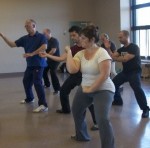 Once again, the Ottawa group with the hard work of Daniel and Rachelle hosted a great weekend seminar. Over the course of three days, Master Chen shared his knowledge and experience in the secrets of training in the Chen Style Practical Method. .
Once again, the Ottawa group with the hard work of Daniel and Rachelle hosted a great weekend seminar. Over the course of three days, Master Chen shared his knowledge and experience in the secrets of training in the Chen Style Practical Method. .
The workshop covered many topics. I will only describe some of the key ideas.
Traditional systems vs. modern systems
The Practical Method of Chen Taiji is a traditional Chinese martial arts system. This system is based on rote learning or learning through repetition of the form and not through intellectualization. The key in the traditional method is to copy, imitate or follow until the student can demonstrate a physical ability. The traditional method is the only way to acquire real “kung fu” (功夫) – the effort over time in practice which creates an innate ability that is not present without training. In comparison, the modern method suggests an emphasis on theoretical understanding or “deep understanding”. The suggested advantage of modern methods is that it establishes the student’s critical thinking skills. The traditional method is quite simple yet quite harsh. Follow the teacher’s instructions and do the yilu 10,000 times and the student might acquire a physical ability. In this modern age, the traditional method is no longer acceptable because we are conditioned to be analytical. From the view point of the traditional method, when the mind starts to think, then the learning stops (see “Monkeys” ). Master Chen relays one story to illustrate the traditional method: Grandmaster Hong would watch his students practice and his only comments occasionally would be “Don’t move”. It is only after the Grandmaster’s passing and on further reflection did the student realize the profoundness of those instructions.
Luckily, for the Practical Method, Master Joseph Chen can act as a bridge between the traditional method of Grandmaster Hong and modern society. Master Chen provides the student with a taste of the traditional method through correct physical training and yet he can provide the correct theoretical information to satisfy the student’s curious mind. If Taiji training is food, then yilu practice is the main course. Practicing yilu nourishes the student and any theoretical explanation is a dessert that satisfies your cravings but it might not necessary be good for you.
As Grandmaster Hong reminds us on learning:
妙造自然, The wonder of nature,
源於苦功; Comes from hard training,
自強不息, Persist without stopping,
Over the next two days, we performed many yilus as well as corrections to the foundations techniques such as the positive circle, twist the towel, and fetch water. We are reminded, that hard work is the only key to progress. Master Chen is extremely kind by satisfying our cravings for sweets.
The topic of Traditional Training Methods was also discussed by Master Sun ZhongHua (孙中华) in his article The Ancient Training of Quan (古法练拳) which was expertly translated into English by Michael Koh from Singapore Practical Methods.
Yin / Yang Separation
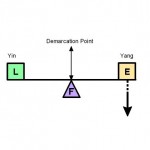
Figure 1. Yin Yang Separation and a Lever
Wáng Zōngyuè (王宗岳) in his Taijiquan Treatise (太極拳論 ) said that “Yin / Yang is the source of Taiji”. (太極者 …陰陽之母也). Master Chen in his Sept 17 2011 – Ottawa seminar discuss the concept of connecting pairswhich is one step in applying the concept of Yin / Yang separation. In this seminar, the emphasis is placed on the demarcation (the boundary between the Yin and the Yang). Once you have found the connecting pair, you have to find the demarcation point or line and apply the concept of Yin / Yang separation. A clear visualization of this idea is a fulcrum (See Figure 1).
The idea of a Yin-Yang separation can be found in top/bottom (see “Want to be good at Taiji? Be a dummy!”), left right, inside and outside and so on.
Positive Circle and Yin-Yang Separation
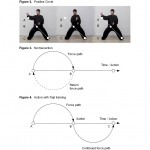
Figure 2-4 showing the relationship between Positive Circle and Yin Yang Separation
Yin Yang separation is important concept when performing the positive circle. I was finally about to gain an insight to its implication. Master Chen has often repeated the instruction performing the basic positive circle: 1-Elbow in, 2 – Turn the waist 3 – Hand out. The three actions and the position of the hand are seen in Figure 2. Super-impost on the figure is three reference points (A, B, C) that together forms the energy lines.
Figure 3 and 4 are schematics representing the energy pathway as a function of time or action. Super-imposed on the schematics are the same physical reference points (A, B, C) as seen in Figure2.
Figure 3 shows the normal force path of an untrained person. For such a person, the first step (Elbow in) brings transfer the force from Point A to Point B. They perform step 2. In step 3 (Hand out), they physically return the hand back to Point A. The force path is demonstrated as a return along the same space as in step 1. The net effect is that there is no change in force. (In physics, energy is a scalar quantity but force is a vector quantity).
Figure 4 shows the trained force path of a student of the practical method. For the student, the first step (Elbow in) transfers the force from Point A to Point B. In step 2, they are reminded that the waist rotation is a switch. In step 3, the force path continues from Point B to Point C. The force generated by the Step 1 start from the hand (Point A) and continues all the way until it reaches the ground (Point C). The switch in step 2 is generally described in Taiji lore as the “Turning of the Dantian”. The net effect is a positive force directed to the ground and a reaction force exhibited by the hand at Point A. This clear and simple explanation contains both the secret and mystery Chen Taiji. It is also an illustration of Yin / Yang separation.
The Thirteen postures
Last time I was pushing hands with Master Chen and he told me his secret was “I only rotate”. I thought he was just kidding but this seminar I finally understand what he meant.
Taiji enthusiast often talk about “The Thirteen postures” (十三勢) “Eight Gates” (八門) and provide some vague explanations of its importance and use. Master Chen was able to explain clearly the physical implications of each of those postures as a manifesting of the same phenomena – the rotation of a sphere.
Figure 5 shows a sphere on a plane (a circle). The circle is rotating on its center and the circle can be divided into four quadrants based on the vertical and horizontal axis. The position of each quadrant can be described using an clock analogy. An incoming force (coming in at 9 o’clock) can touch any segment of the circle but as the circle rotates, the resulting reaction on the incoming action will be different. When an on-coming force moves the circle from 9 o’clock to 12 o’clock (within the top left quadrant), the force is deflected that is the P’eng (掤) technique. A short cut for describing to remember this action is that “the energy goes up hill”. When an on coming force continues and the circle touches the top left quadrant (From 12 o’clock to 3 o’clock), the force is brought towards the center and in Taiji terms this reaction is called Lu (捋). The experience of Lu is to go with the flow. If the on coming force continues and the circle touches the lower right quadrant (from 3 to 6 o’clock) then the action is Ji (挤). Ji is about taking up space. The force continues to rotate the circle, the circle reaches the lower left quadrant (6 to 9 o’clock) then the reaction is àn (按 ). Some people describe the action of An as uprooting but An is better described as letting it go.
Figure 6 shows the sphere rotating in three dimensions. The combination of rotation of the sphere in three dimensions results in the techniques of Cai (採), Lie (挒) and Zhou (肘)., The translation of the entire sphere forms the bases of the K’ao (靠).
Such a vivid illustration of the beauty of the Practical Method but it only highlights how difficult it is to play with Master Chen.
Conclusion
I conclude my observations again with the sayings of Grandmaster Hong:
師教言, The teachings of the teacher
多詳記, You must record carefully,
師示範, The teacher’s demonstration,
看仔細, You must watch closely.
Until the next seminar, April, 2013.

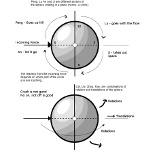

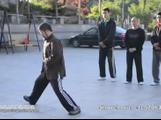
{ 10 comments… read them below or add one }
“When Ming makes notes, it is hard to find anything to add!”
…nevertheless, I’ll scour my notebook and see if I can contribute anything.
Thanks to Ming for creating these useful diagrams.
D.
Great Article Ming. That’s your name now. “Great Article Ming”.
Request for clarification on the translation aspect for the second four techniques cai lie zhou kao – translation is necessary, beyond rotation?
Thanks!
Thanks but all credit goes to Master Chen for explaining those complex ideas patiently and clearly.
For most people, Kao (靠) means a strike or push with the shoulder or upper back. Master Chen explains that a Kao technique uses the entire body. He then explain that in the practical method, you train your body to be like a ball. When the entire ball moves (translation) to hit an object, that is what is known as Kao. The other three techniques (Cai, Lie, Zhou) does not require movement of the ball.
is there a way to view these diagrams on a larger scale? thanks!
I fixed the images, so you can click to enlarge
Great article. Just wondering whether in Fig.5-6 the left-bottom and right-top quadrant labels are misplaced, i.e., should be reversed? Thanks.
I think you are right James, the diagram is off. But I think if incoming force direction is as shown, the arrows around the circle should be the other direction. Peng is in the correct quadrant but, the arrow should be from 3 oclock to 12 oclock (pushing the wheelbarrow up the hill), Lu should be top left quadrant (beginning the downhill) Ji should be follow and squeeze, in bottom left quadrant and An should be release and seperate from opponent…..
I have updated and corrected the descriptions according to the Berlin video. Just reminds me how difficult it is to take notes and remembering Master Chen’s words. “)
I have updated the wording again. This time to match the information from the Berlin seminar. The incoming force appears from 9 o’Clock (moving from left to right). In the first draft, the force was moving from 3 o’clock (moving from right to left) so that might cause confusion when people watch the Berlin clip.
The detail explanation and schematic visualization of the Thirteen postures is now available on video
see “Berlin 2016-10” Online Video
Trailer
Please support the site by purchasing the video.
I have updated the diagram and notes to reflect the new information accordingly.
Thanks for the correction Ominae1 🙂
Good notes, this is the video dir that you are mention http://practicalmethod.com/2017/07/berlin-2016-10-online-video-trailer/
The other don’t appear, until the buy.